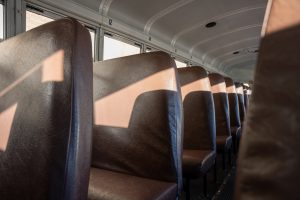How We Look, How We Learn
As our understanding of student identity evolves, school dress codes raise questions of equity and effectiveness.
Studies have shown that school dress code violations across the country do not target all student demographics proportionately.
December 7, 2022
It would seem to make sense that students should be held to a dress code when they are in school, but the truth is that such policies have proven far more layered and troubled than they may at first appear.
“I’ve never seen a boy called out for his attire even though they also break the rules,” said Maggie Suneri, then a junior in a Kentucky high school who produced the documentary Shame: A Documentary on School Dress Code.
The documentary features testimonials from multiple classmates who contend that dress codes negatively impact students’ self-confidence. An update on Sunseri’s YouTube channel states that “[t]he WCHS dress code was changed shortly after this video went viral, and students today can hardly believe this used to be girls’ everyday reality.”
Girls all across the country feel that dress codes unfairly target females. In fact, middle school girls receive school dress code violations over five times as often as boys.
However, the alleged discrimination has to do with more than mere sex; it can also target gender, race, and sexuality.
In a 2021 report from the Gay, Lesbian & Straight Education Network (GLSEN), transgender and nonbinary students reported being disciplined at school more frequently than their cisgender peers because they wore clothing considered inappropriate based on their sex assigned at birth.
Additionally, the subjective language often used in dress codes, such as “immodest or inappropriate,” leaves much to interpretation, inadvertently causing LGBTQ+ students and women to be the target of a disproportionate number of violations.
People of color have also been subjected to more dress code violations.
A 2019 NWLC report on dress codes in Washington, D.C. schools found that schools with majority Black populations were more likely to have severely restrictive dress codes that regulated the length of skirts and shorts and restricted the use of hats, head coverings, and hair wraps.
Such dress codes have been linked to psychological harm, especially to those who express gender identity different from the norm.
“These sorts of dress codes also force them to conform to gender norms that [students] don’t subscribe to, and that can be super harmful for students,” said Sabrina Bernadel, the Equal Justice Works fellow at the National Women’s Law Center . “There’s definitely a negative effect on trans students, gender non-conforming, and non-binary students.”
Critics of school dress codes generally agree that such policies limit freedom of expression, which affects populations that require expression to self-identify.
However, the motivation on the part of school to implement dress codes is not inherently flawed. Social contract theory states that people live together in society in accordance with an agreement that establishes moral and political rules of behavior. A dress code essentially establishes rules of behavior in an educational environment, just like most workplaces and other social institutions.
Certain schools claim that a dress code helps to set the academic tone of the school. Under the social contract, a school is allowed and encouraged to set rules to regulate their environment.
This line of reasoning seems to be widely accepted. In fact, 78% of people polled by The Today Show said children and teens need standards for school attire. 69% agreed school dress codes increase children’s sense of discipline and ability to achieve.
Dress code advocates also question where the line is to be drawn if dress codes didn’t exist. If any type of clothing is permissible, they ask, and if so, should that be allowed?
A repeated stance of those in support of dress codes focuses on equality and inclusivity. Specifically, they claim that dress codes promote a comfortable, cooperative environment while eliminating individualistic attire that can distract from common educational goals. The Bonneville Academy in Utah states that when all the students wear the same style of dress, there will be the same atmosphere for all students across the school campus. This pattern encourages the student body to concentrate more on their academic and co-curricular activities, as the visual differences between students from different demographics are not noticeable.
Regardless, as our understanding of student identity grows more sophisticated, schools must re-assess both the positive and negative impact that dress codes have on their students.












